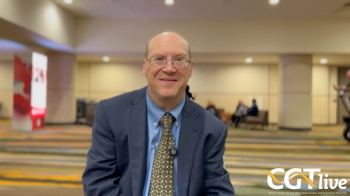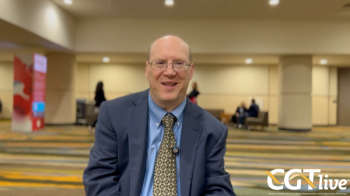
Commentary on Abstracts #974 and #1297
Overexpression of the bcl-2 gene can be detected in approximately 80% to 90% of patients with advanced-stage follicular NHL, as well as in 20% to 30% of those with diffuse large B-cell NHL. A number of studies have attempted to correlate outcome with residual disease using PCR in patients who have achieved a clinical complete response with chemotherapy, antibody treatment, or high-dose therapy with stem-cell support. However, the studies have been inconsistent, and, therefore, the clinical value of such measurements has been limited.
Overexpression of the bcl-2 gene can be detected in approximately 80% to 90% of patients with advanced-stage follicular NHL, as well as in 20% to 30% of those with diffuse large B-cell NHL. A number of studies have attempted to correlate outcome with residual disease using PCR in patients who have achieved a clinical complete response with chemotherapy, antibody treatment, or high-dose therapy with stem-cell support. However, the studies have been inconsistent, and, therefore, the clinical value of such measurements has been limited.
Gupta et al (abstract #974) monitored minimal residual disease using PCR in lymph node biopsies, as well as blood and bone marrow samples, from 58 patients with advanced-stage follicular NHL treated with rituximab, with follow-up evaluation of marrow and blood a month after the last infusion. Overall, 61% of patients became PCR negative, with no correlation between PCR status and clinical outcome.
Cabanillas et al (abstract #1297) reported somewhat different findings. These investigators used PCR to assess minimal residual disease in 86 previously untreated patients with stage I or II follicular NHL. Patients were treated with one of several different treatment regimens: central lymphatic irradiation, an alternating triple-therapy program, or COP (cyclophosphamide, Oncovin, and prednisone)/CHOP with or without radiation therapy.
Molecular responses were more common in patients treated with alternating triple therapy. Most cases (86%) were positive in blood before treatment. There was an apparent correlation between early response and projected failure-free survival at 7 years. Whether there is an impact on overall survival requires a longer period of observation. The discrepancies among the various studies may be explained by technique, patient selection, or other factors. Nevertheless, at present, bcl-2 assays are not a part of standard clinical practice.
Newsletter
Stay at the forefront of cutting-edge science with CGT—your direct line to expert insights, breakthrough data, and real-time coverage of the latest advancements in cell and gene therapy.
















































